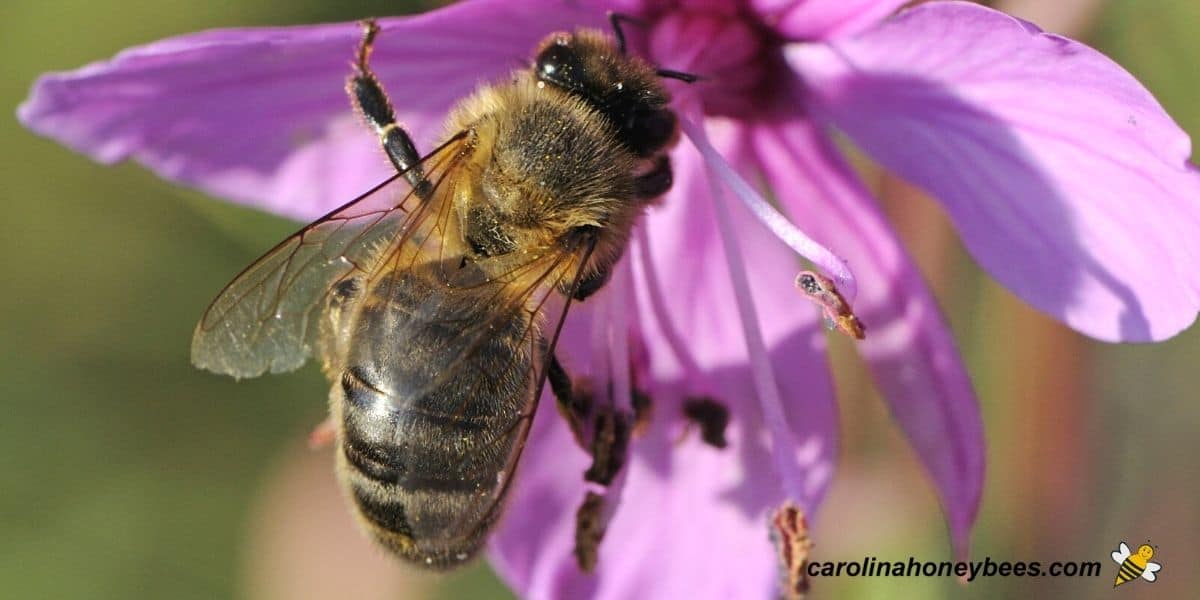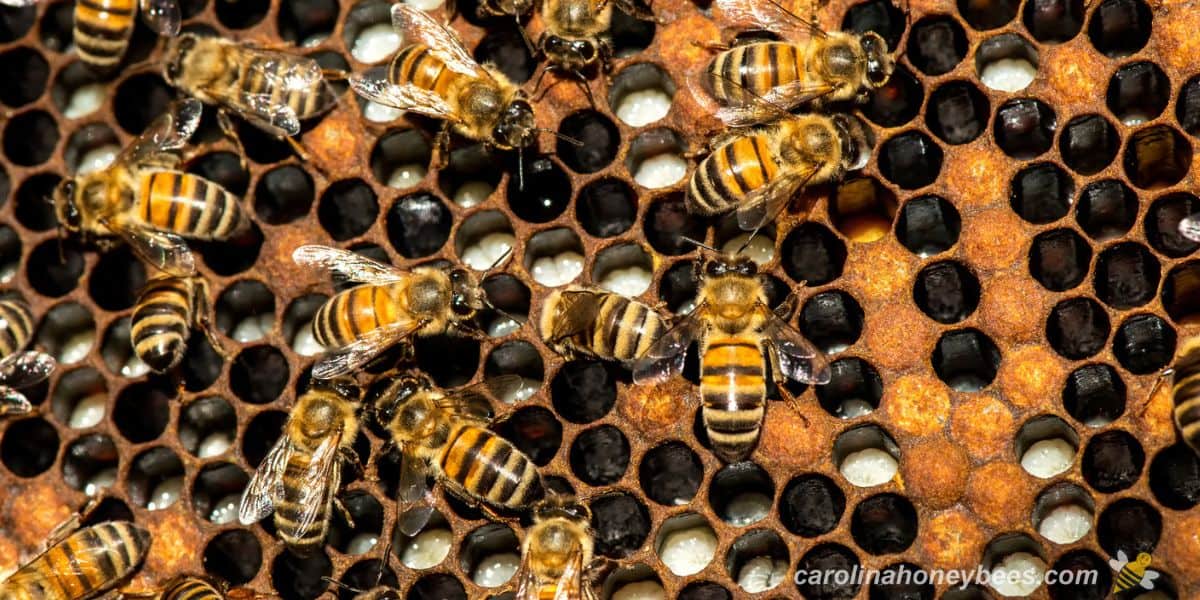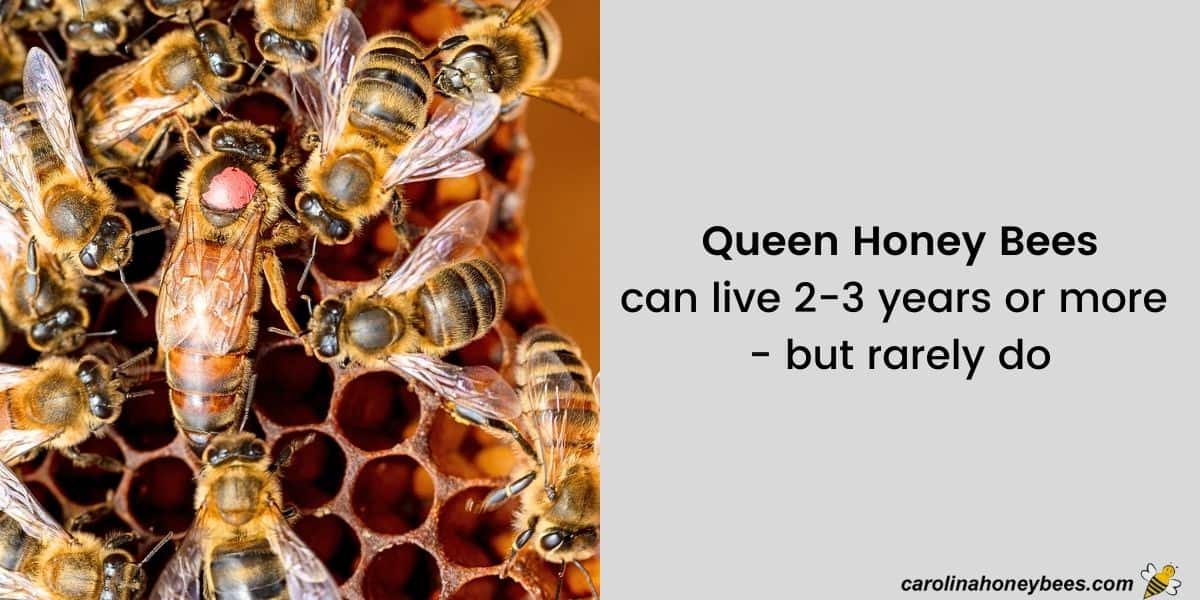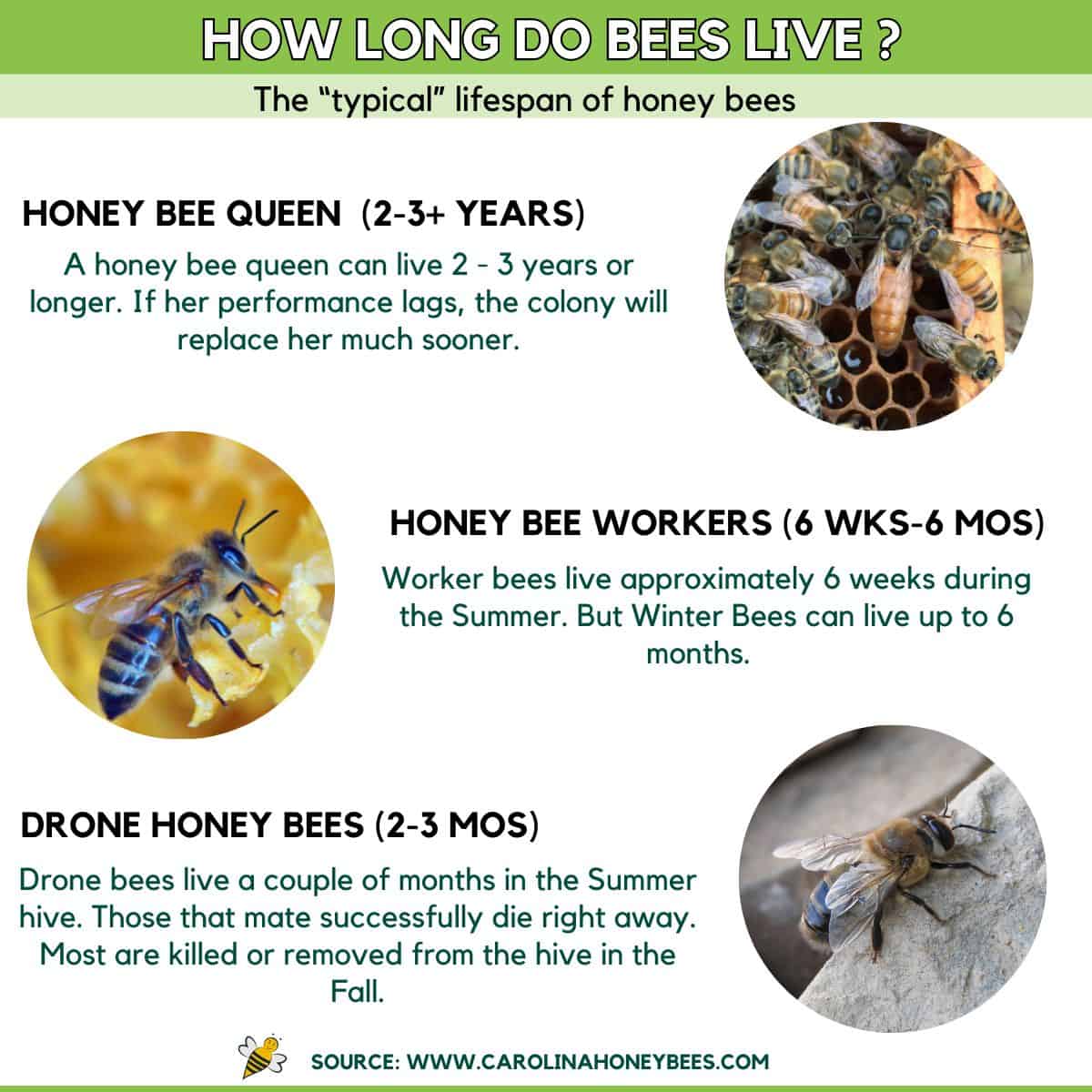How Long do Bees Live?
Honey bees are vital members of the ecosystem even though most have short lives. How long do bees live? The life span of a honey bee varies depending on its role in the colony and many other factors. In this article, I will share with you the basics of the different lifespan of each colony member and how that affects colony performance.

When I became a beekeeper, I researched all of the facts about honey bees that I could find. What I found was many amazing characteristics that I never even considered about these interesting insects.
The Lifespan of a Honeybee: An Overview
There are many different species of insects that are called bees. Therefore, the length of time bees live varies. Interestingly, within a honey bee colony – the members of the same species have different lifespans too!
Honey bees (Apis mellifera) are one of the most studied insects in the world. These bees are social insects that live in large colonies. A colony can continue for years. However, the individual bees in the hive have different lifespans.
The Beginning: Queen, Worker, Drone

All honey bees pass through a life cycle consisting of 4 stages (egg, larva, pupa and adult). This is called complete metamorphosis.
The queen bee lays tiny bee eggs in wax cells – one per cell. After 3 days, the egg becomes a bee larva. Fed by young adult nurse bees -this little eating machine grows quickly.
When the larval stage ends, cells are capped with wax as the larva transforms into a pupa. Finally, a fully developed adult bee emerges from the cell. This is why you never see real “baby bees” – they emerge as adults.
How long a honey bee lives depends on several variables but the most important is it’s role in the hive. Let’s look at each one.
Lifespan of Queen Bees

A queen honey bee can live for several years (2-3 most common).Yet, she rarely lasts that long in the colony.
The primary role of the queen bee is to lay eggs and produce pheromones that unite the colony. As the she ages, her pheromone production declines and egg laying slows.
Once the colony senses a failing queen, they will replace her. In a process called supersedure, they kill the old queen and make a new one.
In my apiary, it is rare for a queen to live in my production hive more than 2 seasons. In most cases, the colony will replace her or I see a decline in performance and need to requeen my beehives myself.
Lifespan of Worker Bees

Most of the bees in the hive are worker bees. These non-reproductive females develop from fertilized eggs. They are the workforce of the colony.
From collecting pollen and nectar, to feeding larva and defending the hive, a worker’s job is never done. Unfortunately for these hard-working ladies, all this work takes a toll on their bodies.
How long do worker bees live? This is an interesting tidbit in honey bees. How long a worker bee lives depends on when she is “born”!
Most worker honey bees live about 6 weeks. These are the bees of summer, those produced during the warm season. They work inside the hive for the first 3 weeks and during the last 3 weeks, the worker becomes a forager gathering food.
Flying long distances to collect resources needed by the colony takes a toll on her wings. Summer worker bees literally work themselves to death.
Winter Honey Bees Live Longer
Interestingly, worker honey bees live longer if they are “born” in the Fall. They are physiologically different with larger fat bodies inside their abdomen. These fat Winter bees can live up to 6 months!
Lifespan of Drone Honey Bees

The males of the colony are called – drone bees. They develop from unfertilized eggs. Drones are essential for honey bee reproduction as their sole purpose is to mate with virgin queens.
Drones do no other work. Mating takes place outside and well away from the hive in areas called “drone congregation areas“.
If a drone bee mates with a queen, his lifespan is over. During the mating process, his reproductive organs are ripped from his body. Shortly he falls to the ground and dies.
Not every drone is successful in passing on his genetic material. These males will live several months during the warm season.
Alas once Fall arrives, the easy life of the drone is over. They are thrown out of the hive and left to die. The colony does not want to feed them over the Winter.

Factors in Bee Life Expectancy
We can only give an average bee lifespan for any insect (bees or wasp) because of the many variables involved. These are some of the factors affect the health and survival of individual bees, colonies or whole bee populations.
- climate change
- pesticides
- bee disease,
- honey bee pests
- predators of bees
- loss of habitat
Weather extremes can be responsible for bees not living as long as they could. Record cold or heat, drought or torrential rains – all affect the bees and their food resources.
Pesticide exposure in agricultural settings or even neighborhood mosquito spraying affects the lifespan of bees. Sublethal effects that harm the bees but does not kill them impacts their behavior and productivity.
In honey bees, varroa mite infestations shorten the lives of many colonies. Beekeeper try to lessen this by performing testing for mites in beehives to head off a bigger problem.
All bees have predators. The unlucky queen who is eaten by a predator on her mating flight will not live to the old age of 3 or 4 years. Predators, such as yellow jacket wasps and even some birds eat bees.
All pollinators – including bees have experienced a decline in habitat. The clean water and varied food sources required for ideal bee habitat grows less and less.

Differences in the Lifespan of Bees
Among the vast diversity in the bee family it is only natural that lifestyles and lifespan vary too. A close relative of honey bees is the popular Bumble Bee.
Their colony does not over-winter as a group. Most of the adult bees die when cold arrives, leaves only the queen to survive until Spring. She may live several years in good conditions.
The majority of bees in the world are solitary bees (Mason bees, digger bees, sweat bees etc). They have some of the shortest insect life spans ranging from a few weeks to a few months.
FAQs
The honey bee colony’s survival plan needs a large population of workers to get ready for Winter. During the cold months, fewer workers are needed. But, during the busy warm season, worker honey bees work themselves to death and must be constantly replaced with new adults.
Due to their barbed stinger, most honey bees do not live long after stinging a mammal. Due to fluid loss and having their stinger ripped out of their body – if a honey bee stings you -they usually die immediately or within a few hours.
A queen bee has the capacity to live for 3 – 4 years (sometimes more) but she is usually replaced before then.
There are several reasons queen bees live longer than other members of the colony. There are several reasons for her longevity. One is supreme nutrition (including royal jelly). Also, the queen doesn’t have to work outside the hive so her wings and other parts don’t wear out as quickly.
Final Thoughts
Understanding how long honey bees live is crucial for beekeepers, like myself and those interested in these vital pollinators.
As we see declining pollinator populations, this is a good time to get to know these valuable insects. And strive to understand exactly why bees are so important.

